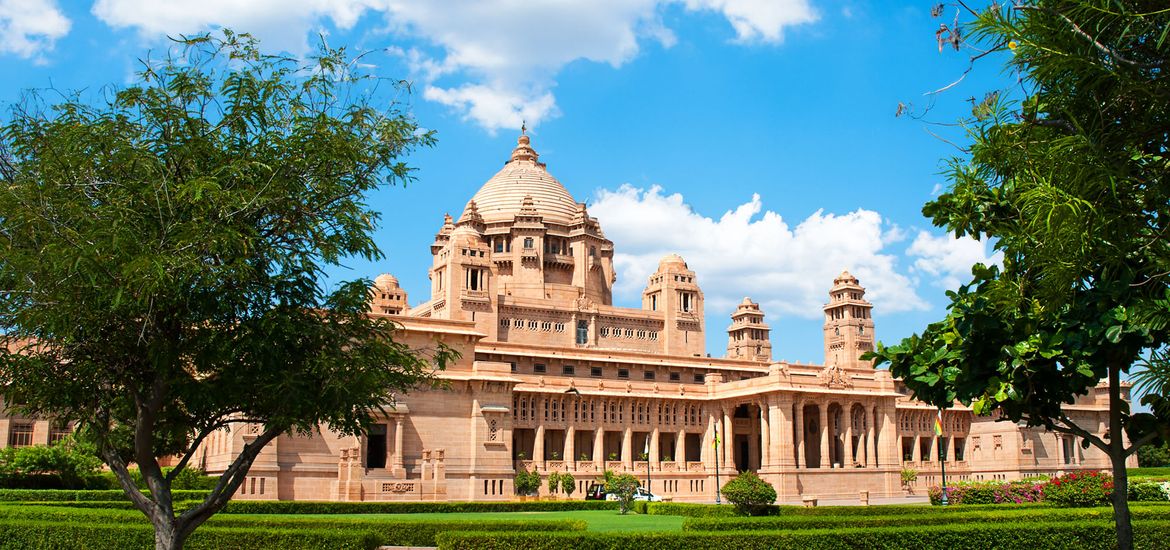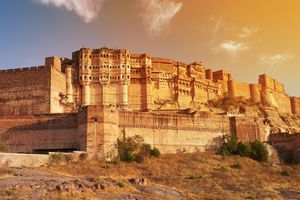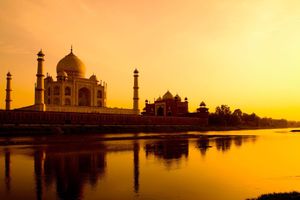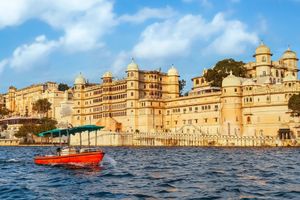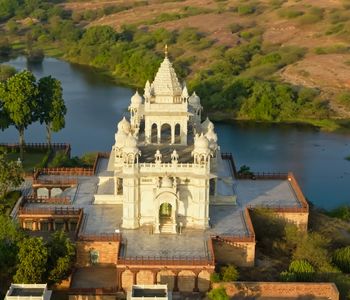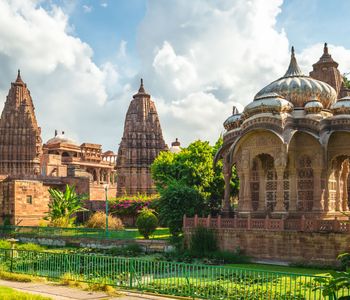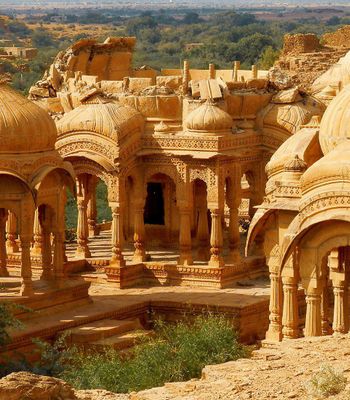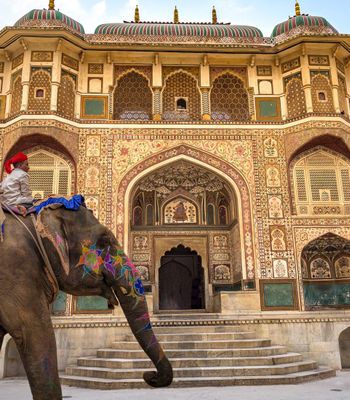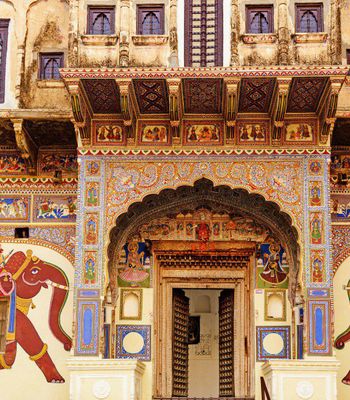Set against the backdrop of Rajasthan’s golden deserts and the blue hues of Jodhpur, Umaid Bhawan Palace rises like a timeless monument of hope and grandeur. It is not just an architectural wonder but a palace with a story deeply rooted in compassion and resilience.
Commissioned during a time of great adversity, it symbolises the unique bond between a ruler and his people, where royalty served not as a luxury but as a lifeline. Today, this magnificent structure stands proudly atop Chittar Hill, blending regal elegance with historical depth and housing one of the finest heritage museums in India.
A Palace Born from Hope: The Story of Umaid Bhawan Palace
The story of Umaid Bhawan Palace begins not with its grand architecture but with a prophecy. Legend traces it back to the founding of the nearby Mehrangarh Fort in 1459, when a local saint is said to have cursed the Rathore dynasty with a prolonged drought, which would strike under a period of their "good rule."
Centuries later, in the 1920s, Jodhpur endured one of its harshest droughts and famines, lasting for three consecutive years. With agriculture failing and villagers facing extreme hardship, the people turned to their ruler, Maharaja Umaid Singh, for support.
In response, the Maharaja made a visionary decision, not only to provide relief but to create employment. He initiated the construction of a magnificent palace, both as a symbol of resilience and a source of livelihood.
In 1929, he broke ground for what would become Umaid Bhawan Palace. Despite its grandeur, the palace never became a long-standing royal home.
Maharaja Umaid Singh lived there for only four years before he died in 1947. Maharaja Hanwant Singh, his son, took over the throne for a short time before his untimely death in 1952.
Eventually, Maharaja Gaj Singh II inherited the estate and took a forward-thinking approach to preserve its legacy. He transformed a portion of the palace into a luxury heritage hotel and opened another part, the Umaid Bhawan Palace Museum, showcasing royal artefacts, vintage items, and family heirlooms.
Decoding Umaid Bhawan Palace’s Architectural Brilliance
Built with golden-yellow sandstone, the palace exudes a warm, majestic glow. It is surrounded by 26 acres of beautifully landscaped gardens that enhance its regal charm.
The interiors are adorned with Makrana marble—also found in the Taj Mahal—and lavish Burmese teak, enhancing the palace’s opulence. The palace houses 347 rooms, including grand courtyards, banquet halls, meeting rooms, and royal living spaces.
The central dome, soaring nearly 105 feet high, is reminiscent of Renaissance architecture, while the surrounding towers reflect classic Rajput design. Throughout the structure, motifs and details drawn from Hindu temple architecture can be seen, giving the palace a distinctly Indian soul within its global form.
Lesser-Known Facts About Umaid Bhawan Palace
While many admire the regal beauty of Umaid Bhawan Palace, few know the stories that make it truly special. Here are some rare and remarkable facts that give deeper insight into its past:
- East Meets West in Design: The palace's design brought together two different worlds. The palace’s distinctive Indo-Deco style is the result of a collaboration between British architect Henry Vaughan Lanchester and Indian architect Budhmal Rai. Vidyadhar Bhattacharya and S.S. Jacob later guided the construction.
- A 15-Year Labour of Love: The building process began in 1929 and continued until 1943. The extended timeline wasn’t due to delays; it was a conscious decision to keep locals employed for as long as possible.
- A Short Stay for Its Creator: Maharaja Umaid Singh, who commissioned the palace, got to live in it for just four years before passing away in 1947.
- Still a Royal Residence: Part of the palace continues to serve as the residence of Maharaja Gaj Singh II and his family. The rest has been turned into a heritage hotel and museum, making it one of the rare palaces where royalty still lives.
- Chittar Palace: Locals commonly call it Chittar Palace, named after its position atop Chittar Hill—the highest point in Jodhpur.
Beyond being a royal abode, Umaid Bhawan Palace stands as a symbol of heritage and grandeur. From its intricate design and historical relevance to the vibrant museum it now hosts, every corner tells a story. A visit here offers not just a glimpse into royal life but into a chapter of Rajasthan’s past shaped by vision and empathy.
